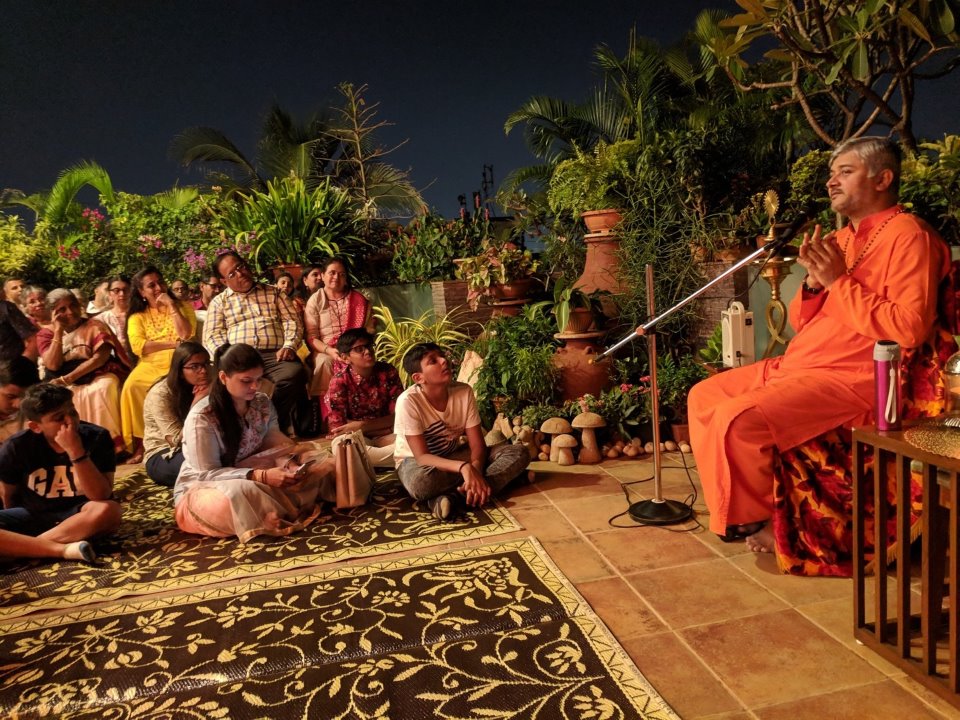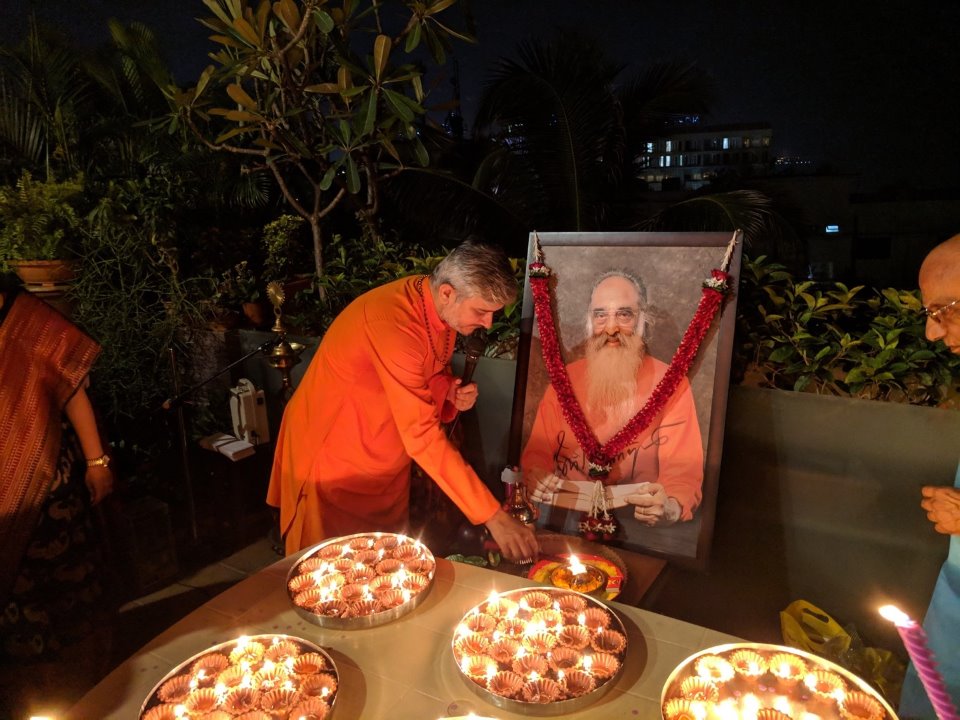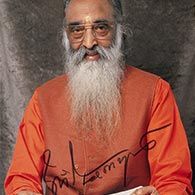Diwali was celebrated in Chinmaya Prakash Zone at the Patels’ residence in Juhu. There was satsang with Swami Swatmananda, who spoke on Tamaso Ma Jyotirgamaya. More than a hundred devotees attended the talk. Swamiji beautifully explained the significance of each day of Diwali.
* Govatsa Dwadashi, Vasu Baras or Vag Baras
On this day, the cow is worshipped. On a spiritual level, the day involves overcoming of Rajo Guna, one must tide over aggression. Every aspect of the cow is indicative of selflessness, calmness and service to all. One must imbibe these qualities and move towards Satva Guna.
* Dhanteras
This day has Puranic significance. The ocean was churned and various items imerged from it. Mother Lakshmi appeared. Though everyone wanted her, she sat at the feet of Lord Vishnu, who was free from desire. Dhanvantri Bhagwan and Amrit Kalash emerged. Vedantic significance indicates Mother Lakshmi as symbol of wealth; not only material abundance and prosperity, but also the wealth of virtues. One prays to Mother Lakshmi to bless us with virtues like contentment. One must be blessed with the will to use wealth for the benefit of others and to serve people.
* Naraka Chaudas / Kali Chaudas
Puranic significance involves the story of Narakasura, who was the son of mother Earth and had captured 16,000 princesses. He was to marry them and become immortal. Lord Krishna kills him and the princesses are set free. They surrender to Lord Krishna and He marries them. The spiritual significance as explained by Swamiji is that Narakasura is the demon who is personification of our own ego which has held all our thoughts captive. This makes us suffer in hell. Rishis have propounded that thought can be categorized into 16,000. When ego is destroyed; all 16,000 thoughts surrender unto the Lord and become divine. Therefore, on this day we pray: Oh Lord, please bless me; may this ego be destroyed and may all my thoughts become divine.
* Deepaavali
Deep means lamp and aavali means row. It was on this day that Shri Rama returned to Ayodhya. To welcome Him, millions of lamps were lit. Symbolically, He was not in the kingdom for fourteen years; but was the light of the lives of all Ayodhya-vaasis. When He returned to the kingdom, their lives returned from darkness to light. It is a day to celebrate uncompromising commitment; Shri Rama fulfilled His promise, completing fourteen years of exile.
* Govardhan Puja, Bali Pratipada & Gujarati New Year
Shri Rama’s coronation took place on this day. People greet each other, saying Nutan varsh abhinandan. What is the New Year? Symbolically, home-coming of Shri Rama is the destruction of one’s ego, when one realizes ‘I am Brahman, pure consciousness’.
* Bhai Dhooj
Yama and Yamunaji were children of Suryadevta. When Yamunaji was married, she was unable to meet her brother, as he was always very busy. On this day, she found him at her door and was very pleased. It is said that on this day, if a brother visits his sister, both are blessed with freedom from fear of death. Yamuna is one who has surrendered to Shri Krishna. Yama is one who lives in self-control. Both attain immortality, as they overcome fear of death.
These six days are a beautiful way to evolve from darkness to light, from ignorance to self- knowledge. The evening progressed with meditation on Om and the lighting of 108 lamps, concluding with prasad.




